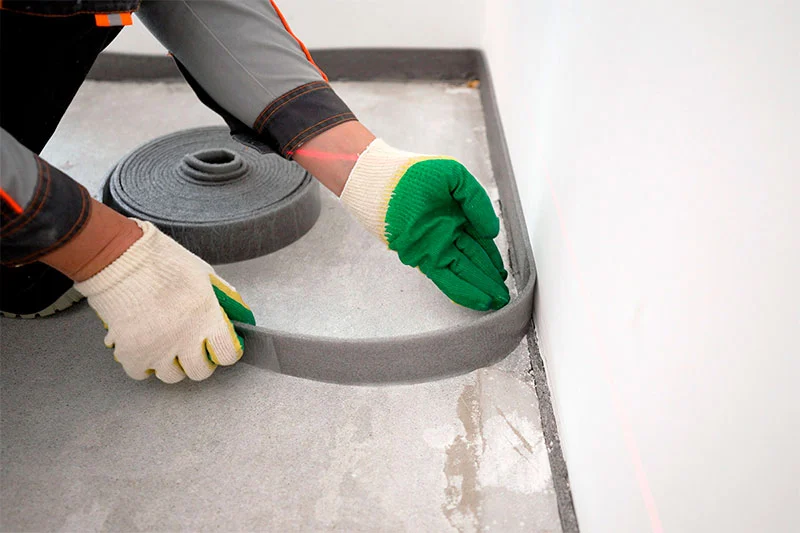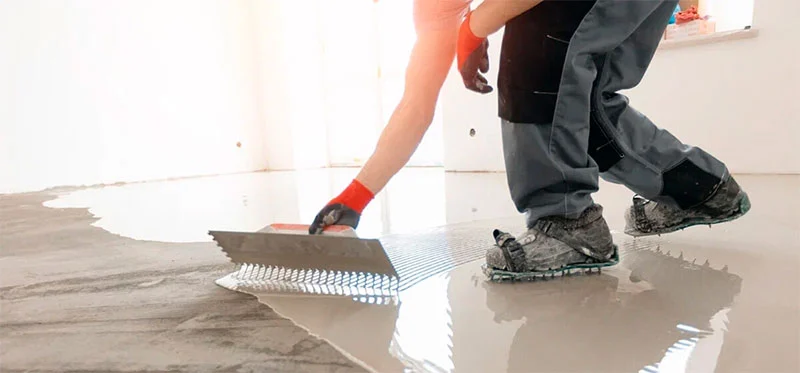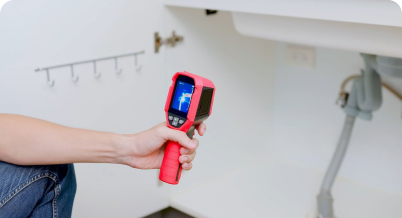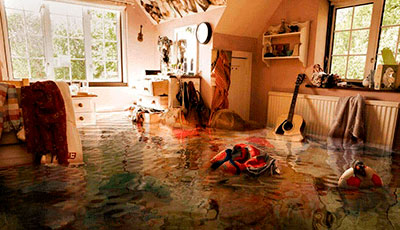Self-leveling floor damping Tape
GF Leads, 14 August, 2025
At GFLeads, we not only help builders and craftsmen find clients across the United States, but also share professional knowledge. Before going into the technical details about the damper belt, let me tell you how GFLeads helps professionals in the field of repair and construction.:
We work only in the USA and we know the specifics of each state.
More than 5,000 satisfied partners across the country
3 easy ways to make money with us:
- Get ready-made leads for Your business
- Recommend our services and get rewarded
- Buy verified customer contacts
Today we will examine an important question - is a damping tape needed for a self-leveling floor?
What is a damping tape?
It is a special compensation material made of foamed polyethylene, which is easily compressed and restores its shape. It has different thicknesses (usually 8-10 mm). Available in rolls with a width of 50-150 mm.
When is a damping tape REQUIRED?

Choosing a damping tape is not just a formality, but a conscious contribution to the durability and quality of your floor. Do not skimp on this element, because its cost is disproportionately small compared to the possible costs of correcting the consequences of its absence or incorrect choice. Remember that a properly selected and installed damping tape is the key to a smooth, crack–resistant surface and comfortable silence in your home.
In addition to the main functions, the damping tape plays an important role in creating a favorable indoor climate. Due to its thermal insulation properties, it helps to retain heat in the cold season and prevents overheating of the floor in summer. This is especially true for rooms with large windows or located on the sunny side.
When choosing a damping tape, pay attention to its density and elasticity. A tape that is too soft cannot provide sufficient expansion compensation, and one that is too rigid can transmit vibrations to the walls. The optimal density will allow the tape to effectively dampen vibrations and prevent floor deformations under the influence of various factors.
Also, do not forget about choosing the correct width of the damping tape. It should be sufficient to cover the seam between the floor and the wall, and also have a small margin for shrinkage of the screed. Depending on the thickness of the screed and the materials used, the width of the tape can vary from 50 to 150 mm.
The feed is required for:
- For "floating" screeds (with hydro or thermal insulation)
- With a floor thickness of >10 mm
- With underfloor heating systems (compensates for thermal expansion)
- In apartment buildings (sound insulation between floors)
- When filling parts (prevents cracks at the joints)
- When is it possible WITHOUT a ribbon?
- When the thickness of the self-leveling floor is <10 mm
- For screeds with rigid adhesion to the substrate
- In small rooms without underfloor heating
5 Main functions of the damper belt
- Compensation of thermal expansion (especially with underfloor heating)
- Creating temperature seams between rooms
- Sound insulation (dampens impact noises)
- Preventing cracks during shrinkage
- Protection during step-by-step filling
Professional tips from GFLeads

How to fasten:
- Fix the tape before filling the floor
- The height should be 20-30 mm above the screed level.
- What to do after pouring:
- Cut off the excess with a knife
- Cover with a decorative baseboard
When choosing a damping tape, it is also worth considering the material from which it is made. Foamed polyethylene (PPE) and foamed polyurethane (PU) tapes are the most common. PPE tapes are characterized by an affordable price and good thermal insulation properties, but they are less resistant to mechanical damage and ultraviolet radiation. Tapes made of PU foam are more durable and elastic, but they also cost more. The choice of material depends on your financial capabilities and the operating conditions of the floor.
Before installing the damping tape, the wall surface must be carefully prepared. It must be free of dust, dirt and remnants of old finishing materials. Irregularities and cracks should be sealed with plaster or putty. This will ensure that the tape adheres securely to the wall and prevents the formation of air gaps, which can negatively affect its effectiveness. It is important to remember that the quality of the foundation preparation directly affects the durability and reliability of the entire floor structure.
The process of installing the damper belt is quite simple, but requires care and attention to detail. The tape is attached to the walls around the perimeter of the room using special glue or double-sided adhesive tape. It is important to ensure that the tape fits snugly against the wall and does not form folds or distortions. After pouring the screed, the protruding part of the tape is cut off flush with the floor level, which ensures an aesthetic appearance and prevents damage to the tape during operation.
Proper floor care using a damping tape also plays an important role in maintaining its durability and aesthetic appearance. Regular cleaning and timely repair of damage will help to avoid problems associated with deformation and destruction of the screed. Use mild detergents and avoid abrasive materials that can damage the floor covering. Remember that careful treatment of the floor is the key to its long and impeccable service.The damping tape is an inexpensive but important element when pouring floors. Its use:
- Prolongs the service life of the coating
- Prevents deformations
- Improves sound insulation
GFLeads offers:
- Ready-made leads for floor builders
- An affiliate program with favorable terms
- Fixed prices in each state
Connect to our system and receive high-quality orders!
P.S. As the damping tape prevents cracks in the floor, so we prevent "cracks" in your budget due to lack of orders. Start working with GFLeads today!
Table of content
- What is a damping tape?
- When is a damping tape REQUIRED?
- Professional tips from GFLeads


